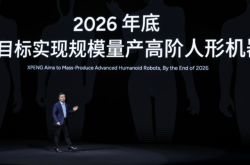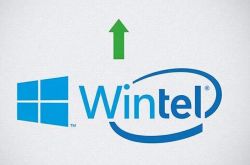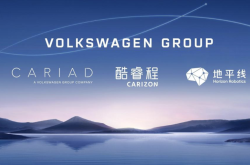China's Most Tech-Savvy Auto Company Sets Ambitious 2026 Targets
![]() 11/06 2025
11/06 2025
![]() 372
372
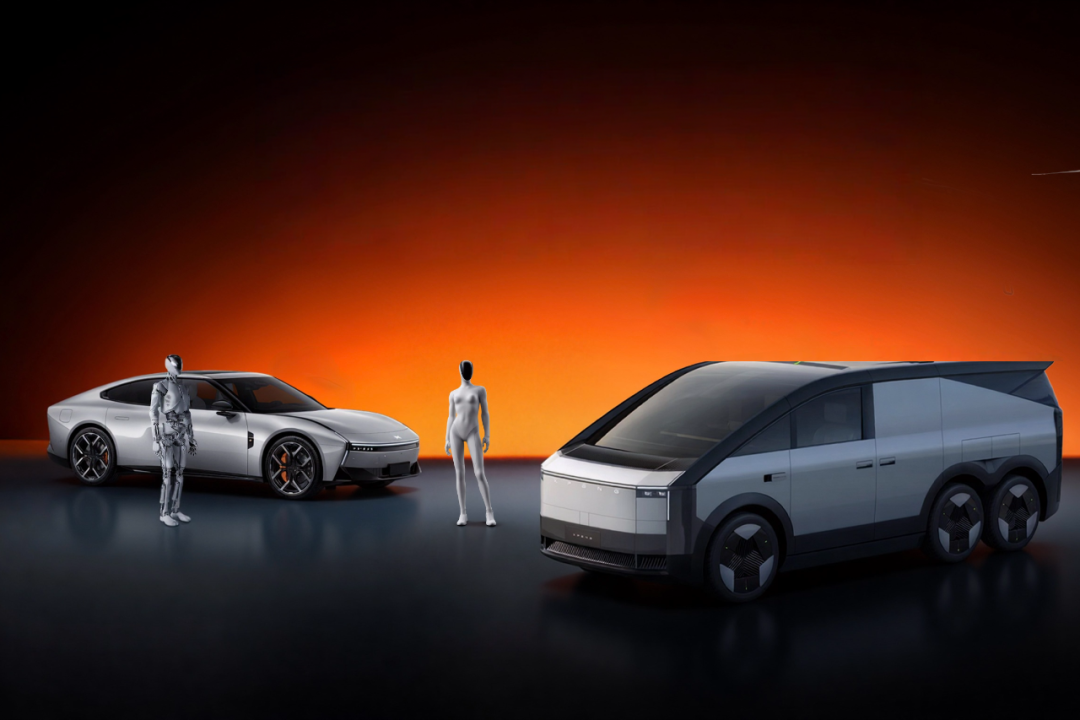
If asked which automaker globally leads in technology, Tesla might be your answer. But when focusing on China, who would you name?
At this year's XPENG Tech Day, He Xiaopeng set four highly ambitious 2026 targets for XPENG Motors:
— Q1 2026: Scale deployment of second-gen VLA;
— 2026: Launch three Robotaxi models and commence trial operations;
— End 2026: Mass-produce humanoid robots, exploring commercialization scenarios;
— 2026: Scale production and delivery of flying cars - HT Aero's Land Aircraft Carrier.
Themed 'Emergence,' this year's XPENG Tech Day highlights both AI advancements and the tangible outcomes from XPENG's technological accumulation in the physical world.
Comparing XPENG to Tesla across the ocean, both automakers are nearly aligned in strategic sectors based on AI. If XPENG achieves its 2026 goals, can it be recognized as China's most tech-savvy auto company?
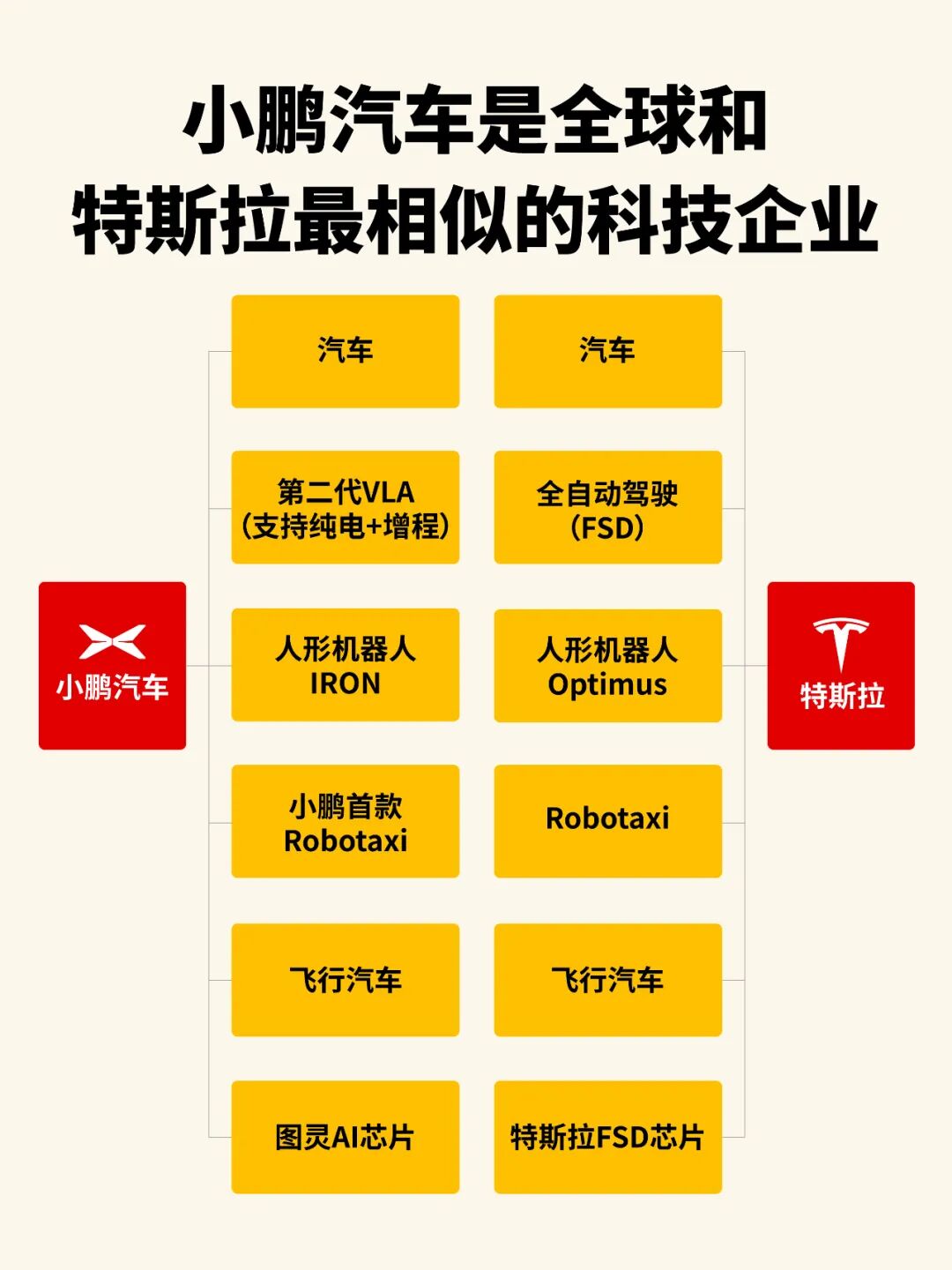
01
VLA Upgrades to Second Generation, with Volkswagen as First Customer
Intelligent driving has been XPENG Motors' strength. However, entering 2025, its implementation capabilities have shown limited surprises, lagging behind Huawei and facing potential overtaking by Li Auto.
At XPENG Tech Day, He Xiaopeng explained that XPENG has been developing two VLA solutions in parallel: a standard version already deployed in vehicles (Vision-to-Language-to-Action).
This standard version has an issue: it requires two conversions from vision to action, with voice acting as an intermediary translation layer, creating bottlenecks and high information loss.
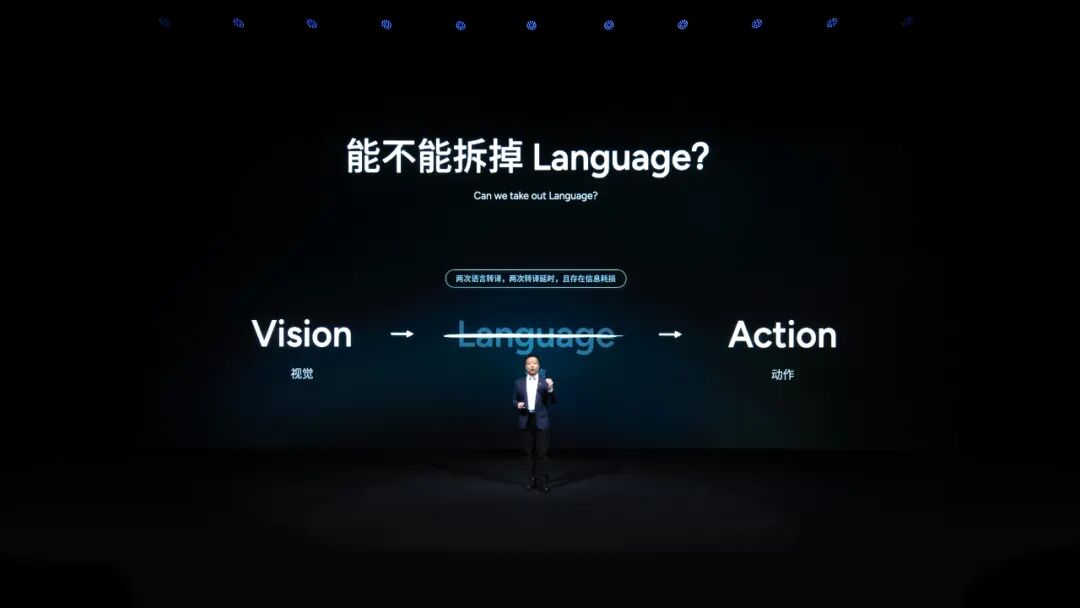
Both Jin Yuzhi, CEO of Huawei's Intelligent Automotive Solution BU, and Ren Shaoqing, Chief Expert in Autonomous Driving R&D at NIO, have pointed out this issue. Both companies adhere to the world model approach.
XPENG was aware of this problem, developing both a standard VLA and an innovative VLA in parallel—one for stability, one for pushing boundaries.
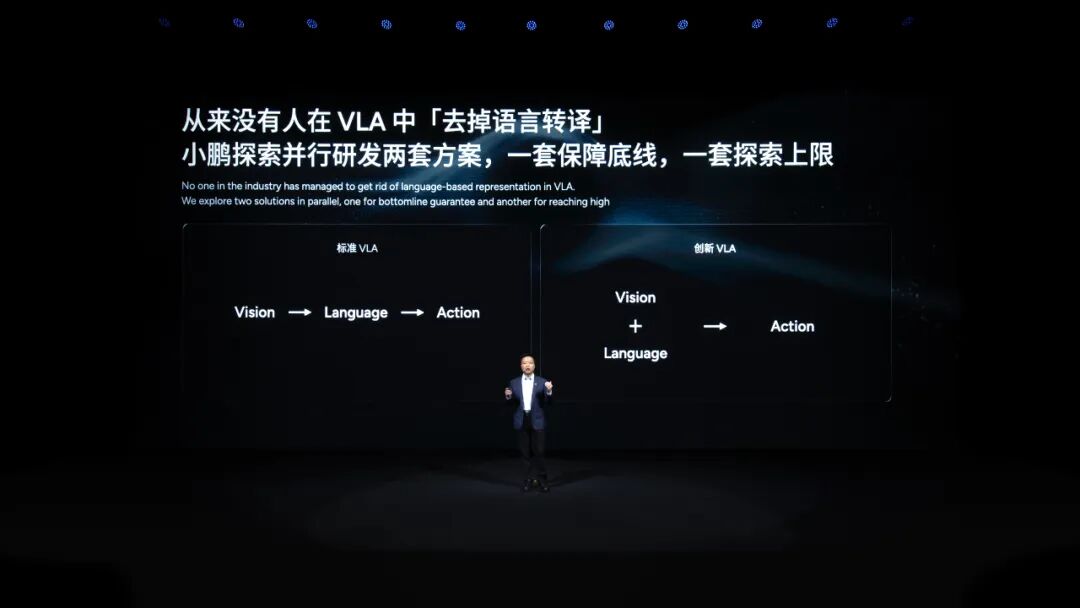
The innovative VLA, or second-gen VLA, eliminates the language translation layer, using vision as the core to learn and perceive the world like humans, reducing information loss and improving reasoning efficiency.
He Xiaopeng introduced that this model functions as both a VLA and a world model, essentially understanding-deducing-generating to produce optimal answers.
Thus, XPENG Motors can be seen as joining the world model camp (world model camp).
The decision to switch to the second-gen VLA came after extensive data training led to a moment of intelligent emergence, though the journey was arduous.
He Xiaopeng revealed that over 2 billion yuan ($280 million) was spent on VLA training, with hope finally emerging in a random version during Q2 this year.
XPENG fed the system 100 million clips of training data, utilizing Alibaba Cloud's 30,000-card cloud computing resources and a 72-billion-parameter foundational large model, iterating every five days across the full chain. Next year's training volume is expected to increase to 50,000-100,000 cards.

Simultaneously, XPENG's self-developed chip is core to deploying the second-gen VLA.
To enable mass production of the second-gen VLA in vehicles, XPENG Motors redeveloped a targeted compiler and software stack for its Turing AI chip.
Through full-chain optimization of 'chip-operator-model,' XPENG Motors achieved deployment of a second-gen VLA with billions of parameters in the Ultra model (2250TOPS), far exceeding the industry's common vehicle model parameter scale of tens of millions.

He Xiaopeng introduced that based on the second-gen VLA, XPENG Motors will soon release the 'Xiaolu NGP' function, significantly enhancing intelligent driving performance in complex narrow roads and mixed traffic environments, with a 13-fold improvement in average intervention-free mileage (MPI) on narrow roads.
Simultaneously, XPENG made a crucial decision to open-source the technology, with Volkswagen becoming the first customer for the second-gen VLA.
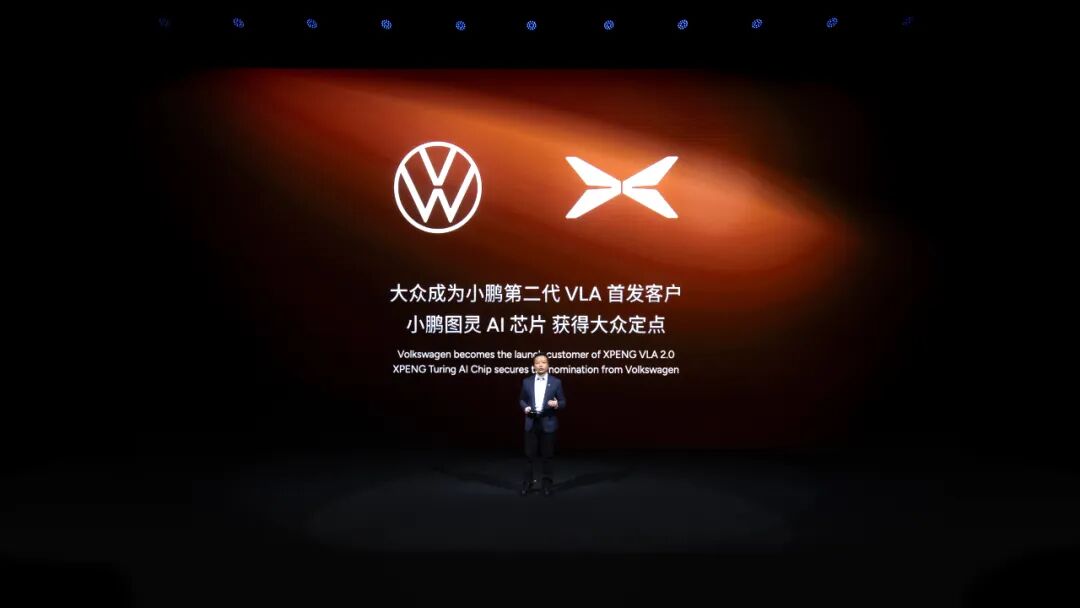
XPENG's vehicle deployment timeline is small-scale experiences in November-December 2025, with Ultra model users receiving updates in 2026.

02
Launching Three Robotaxi Models in 2026 for Trial Operations
The second-gen VLA not only elevates the capabilities of mass-produced vehicles in intelligent driving but also empowers Robotaxi, robots, and flying cars through a single model.
XPENG Motors first announced its Robotaxi business in 2021, but progress remained lukewarm without substantial advancements.
This time, XPENG appears serious, announcing plans to launch three Robotaxi models in 2026.
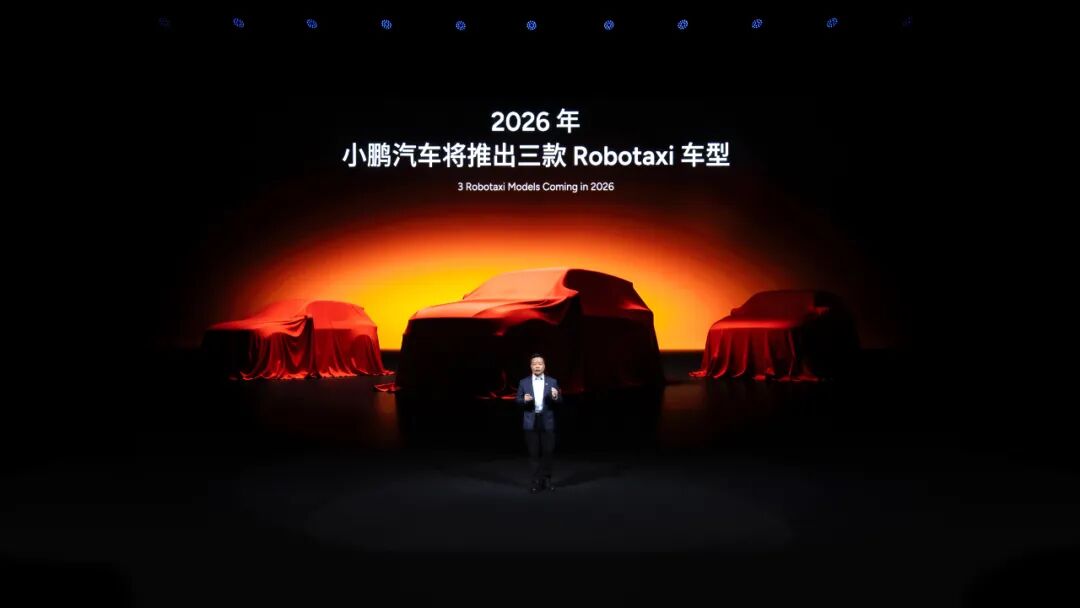
Robotaxi models will be designed for L4 autonomous driving, featuring dual redundant hardware systems to maximize driving safety.
Simultaneously, Robotaxis will be equipped with four XPENG self-developed Turing AI chips, delivering 3000TOPS of computing power (2250TOPS operational + 750TOPS redundant).
Though also utilizing the second-gen VLA, training styles will differ from mass-produced vehicles, focusing on ultimate safety and zero-intervention experiences for smoother rides, supporting rapid generalized learning and global deployment/operation.
XPENG Robotaxi will also integrate VLM and an external interaction system, enabling user communication without boarding.
XPENG Robotaxi will commence trial operations in 2026.
Regarding future autonomous driving directions, XPENG Motors proposed a new vision: fully shared autonomous vehicles (Robotaxi) and privately enjoyed L4-experienced vehicles with drivers.
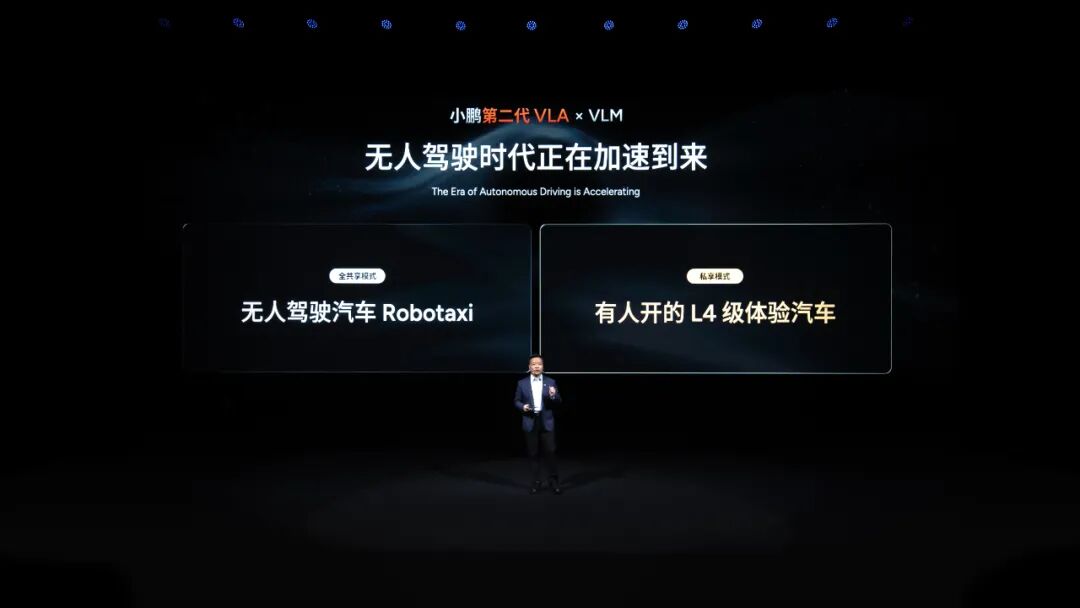
Building on this vision, XPENG Motors will simultaneously launch a new intelligent driving version, 'Robo,' in 2026, sharing the same hardware configuration, safety redundancy, and intelligent driving capabilities as Robotaxi, equipped with two intelligent driving modes.
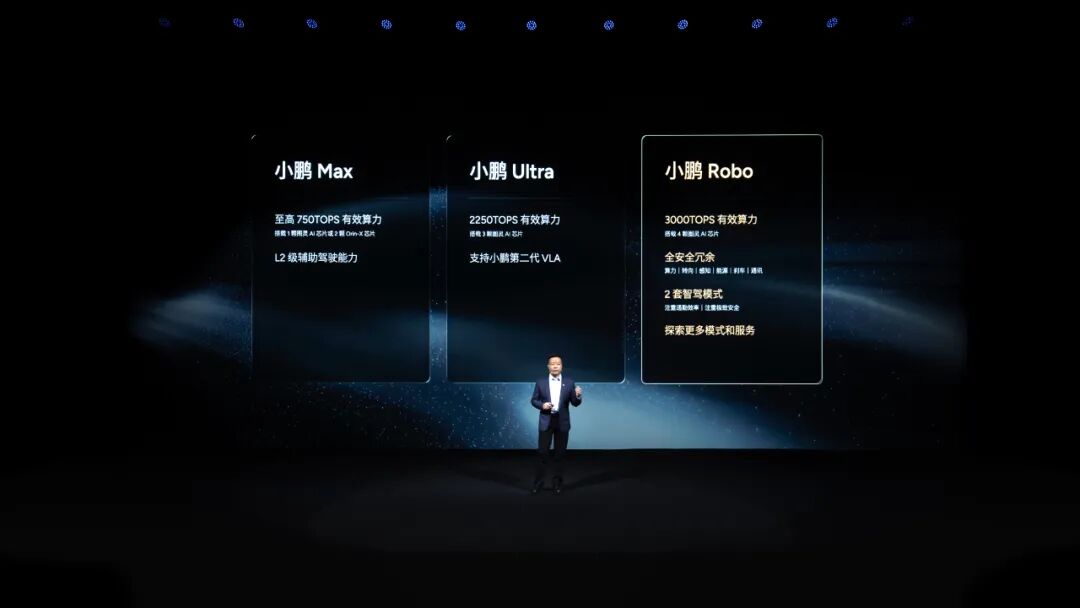
Regarding the Robotaxi business, XPENG maintains an open attitude, expressing willingness to co-build ecosystems with global partners, starting with AutoNavi as the first collaborator. Both will establish global cooperation, with XPENG Robotaxi integrating into AutoNavi's platform.
AutoNavi not only offers mapping services but is also the largest ride-hailing aggregation platform. Their collaboration, blending technology and operations, is worth watching for potential synergies.
03
Humanoid Robots to Resemble Humans More, with Mass Production in 2026
If there's a hotter sector than intelligent vehicles, it's undoubtedly robots.
After seven years of exploration in the robotics sector, XPENG Motors' latest insight is that robots must resemble humans more closely to have commercial prospects, as human-like robots can more easily acquire learning data, generalize, and commercialize.
Thus, XPENG's next-generation IRON aims to be the most human-like humanoid robot.

From the humanoid robot displayed, it features a human-like spine, biomimetic muscles, and fully covered flexible skin.
With 82 degrees of freedom, its head uses 3D curved displays, and its latest-generation dexterous hand, featuring the industry's smallest harmonic joints, achieves 22 degrees of freedom per hand.
Adding passive toe degrees of freedom enables light, cat-like walking.

It debuts with all-solid-state batteries, reducing weight by 30% and increasing capacity by 30%. Equipped with three Turing AI chips, total computing power reaches 2250TOPS.
At the software algorithm level, it incorporates a physical world large model: VLT (brain) + VLA (cerebellum) + VLM (interaction) for advanced brain-cerebellum capabilities.
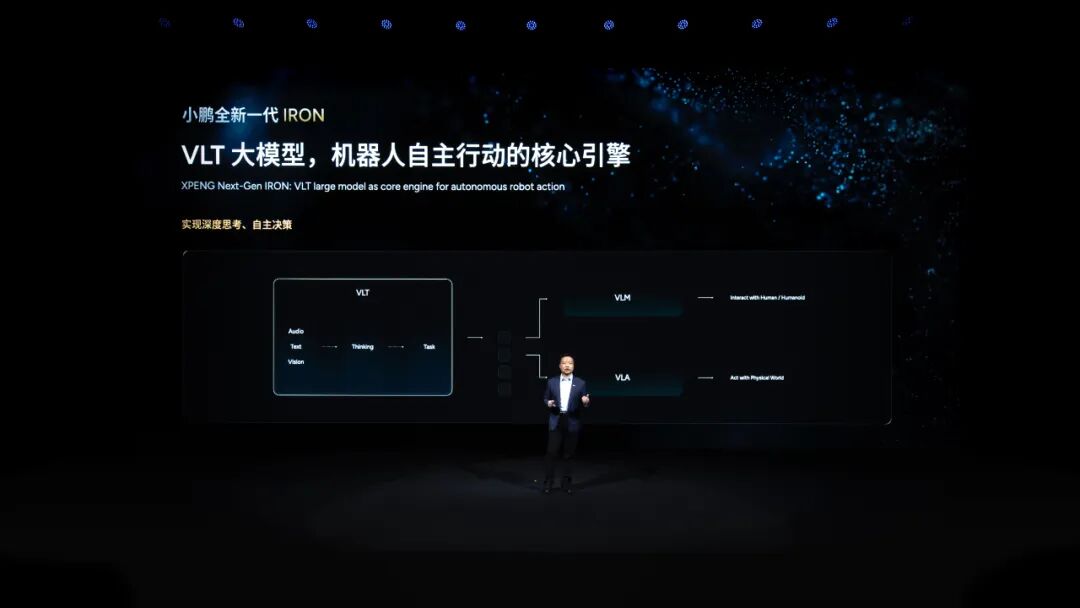
He Xiaopeng introduced that currently, mass-producing high-level robots is as challenging as Robotaxi development during immature software/hardware stages. XPENG's robotics business involves 10 R&D teams and 20 departments, with a total team size exceeding 1,000.
XPENG aims to achieve mass production of humanoid robots by the end of 2026.
Robots are fragile and expensive, making them unsuitable for dirty or strenuous tasks. He Xiaopeng believes current suitable commercialization scenarios mainly include shopping guides, tour guides, and search services.

Baosteel will become an ecological partner for XPENG's IRON robotics project, with XPENG IRON deploying at Baosteel to explore application scenarios and iterative evolution in complex industrial fields like inspections.
04
New Flying Car Unveiled, with Land Aircraft Carrier in Mass Production by 2026
Following new energy vehicles, the low-altitude economy is poised to become China's next trillion-yuan emerging industry.
XPENG Aeroht introduces two flying systems for low-altitude travel: the Land Aircraft Carrier for personal low-altitude flights and the full-tilt hybrid-electric flying car 'A868' for multi-person low-altitude travel.
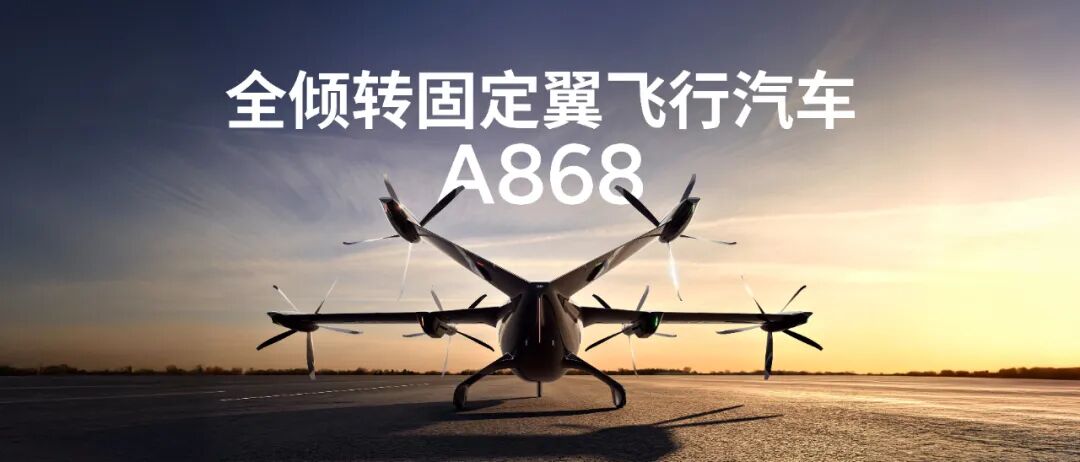
The officially unveiled 'A868' at this Tech Day adopts a full-tilt configuration, built on XPENG Motors' Kunpeng super extended-range architecture with a self-developed aviation-grade hybrid-electric core, expected to achieve a 500km range and a maximum speed of 360km/h, with a 6-seat cabin designed for business travel needs.
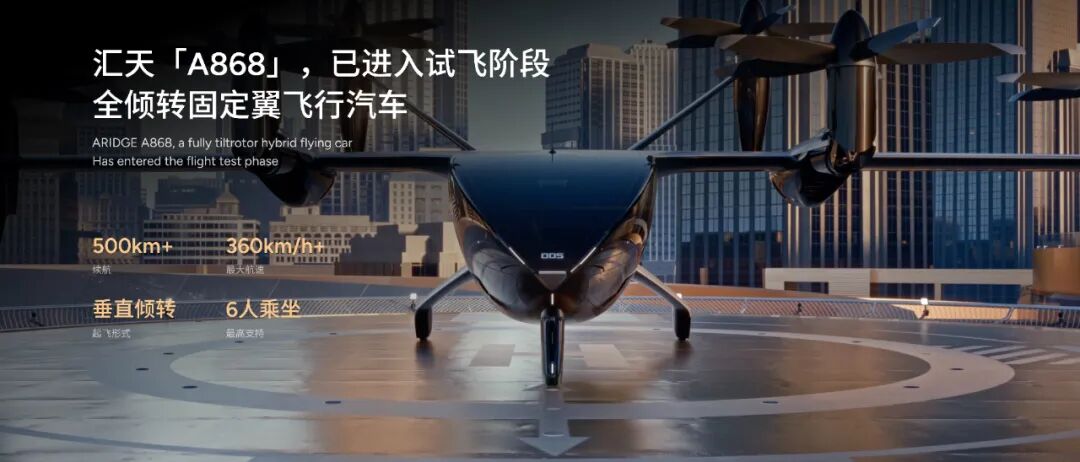
Currently, 'A868' has officially entered the critical phase of flight verification.
HT Aero's other product, the Land Aircraft Carrier, has officially entered pre-mass-production, with global orders surpassing 7,000 units.
It is worth noting that the Land Aircraft Carrier overturns the traditional operating logic of aircraft, featuring the industry's first intelligent flight cockpit and the world's pioneering "four-axis-in-one" single-lever control system, enabling novices to easily operate it after training.
In terms of safety, it adopts a comprehensive safety redundancy design, covering key systems such as power propulsion, power energy, high/low voltage power supply, flight control navigation, flight operation, and bus communication. Additionally, it innovatively employs a six-axis, six-propeller, dual-duct configuration, ensuring safe landing even in the event of propeller failure.
Regarding mass production, the HT Aero flying car production plant commenced trial production on November 3 and successfully rolled out the first Land Aircraft Carrier aircraft.
This factory has a planned annual production capacity of 10,000 units, with an initial annual capacity of 5,000 units. At full capacity, the production line can roll out one aircraft every 30 minutes, accelerating the large-scale mass production of the Land Aircraft Carrier by 2026.
05
In Conclusion
With the support of AI advancements, several core business segments of XPENG have reached critical milestones for mass production. At this pivotal juncture, XPENG has redefined itself with a more fitting positioning, though it may sound somewhat abstract to outsiders:
XPENG's positioning has been upgraded to 'An explorer of mobility in the physical AI world, a global embodied intelligence company.'
After reading this, do you agree that XPENG is the most technologically advanced Chinese automotive company? Between XPENG and Tesla, which one do you favor more?


